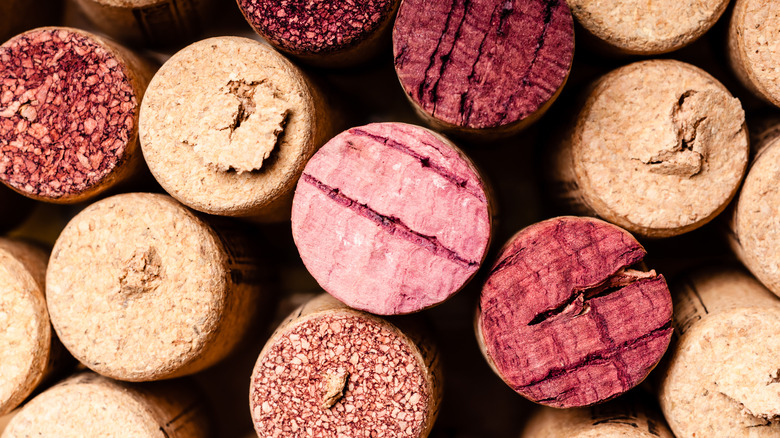Why The Cork Is Presented To You When You Order Wine
We all choose wine based on a set of personal criteria, including taste, region, age, reputation, and even label art. But the cork — not so much. It's presumed that much of the spectacle of ordering wine is tied up in ritual and tradition, but where is the line between substance and service theatrics? According to the service standards of the Court of Master Sommeliers, when you order a bottle of wine in a fine-dining restaurant, the server is meant to present you with the bottle's cork, often atop a small tray or "underliner."
But there's a reason for the elevated presentation of the cork, and it has almost nothing to do with smell, an assumption that a large number of wine lovers make. Winemakers and vino collectors alike cringe at the dreaded "corked" or "cork tainted" bottle of wine in which chemical compounds known as TCAs are present in the wine, causing undesirable flavors and aromas, explains the Martha Stewart website. But smelling the cork isn't the best way to detect TCAs, as they could easily be in the wine but not in the cork. Instead, it's best to smell the wine in the bottle and then in the glass.
The ceremony surrounding the cork in restaurant dining rooms is for a couple of other reasons related to quality. And since at least 60% of the world's 20 billion bottles of wine produced annually still bear a cork stopper, per INC., it's worth exploring that reason.
Authenticity and quality
An astute server will have already used the cork to identify serious problems with the wine before it gets to the table. For example, Vinfolio says if the placement of a cork is off or if it's bulging slightly, that indicates heat damage or improper sealing. But the second round inspection of the cork goes to the imbiber, which is why the cork is pulled, presented, and subject to tableside approval. But what should you look for?
There's a distinct visual appeal to wine drinking, with color tones ranging from honey caramel to deep burgundy and pretty-in-pink rosé. But it's not just the wine hues that deserve some scrutiny from your peepers. That cork presented when you order wine is there for two reasons, both involving sight.
First, locate the stamp on the cork to verify it's the type and year you requested, and that it corresponds with the outside label, explains INC. This helps reveal any unfortunate instances of counterfeiting. The second revelation offered by the wine cork is closure quality and whether the wine has been properly stored according to best practices. Look for staining of the cork, especially with red wines, which should be minimally present at the tip end only. Gently press the cork, feeling for very slight moisture and pliancy. Excessively soggy corks could mean the wine has gone bad or was sealed incorrectly, per Vinfolio, whereas a dry or crumbly texture could fail to protect the liquid from oxidation.

